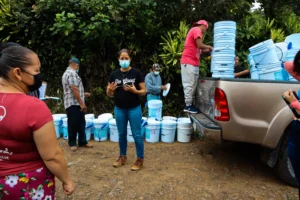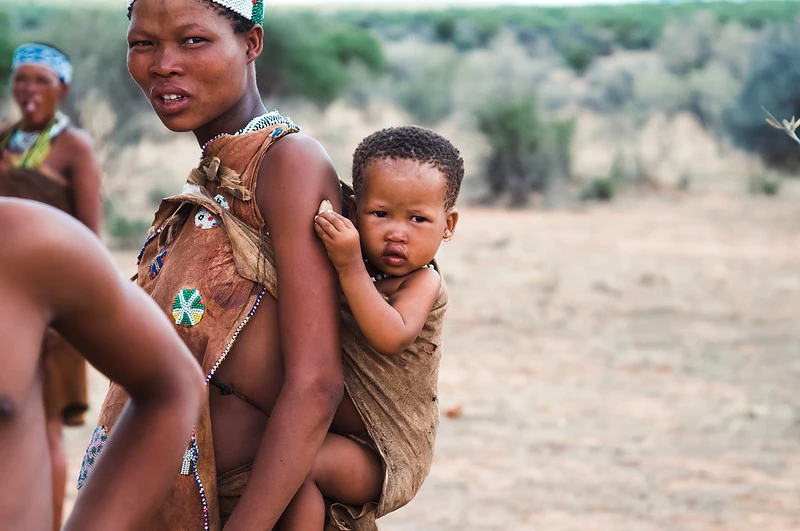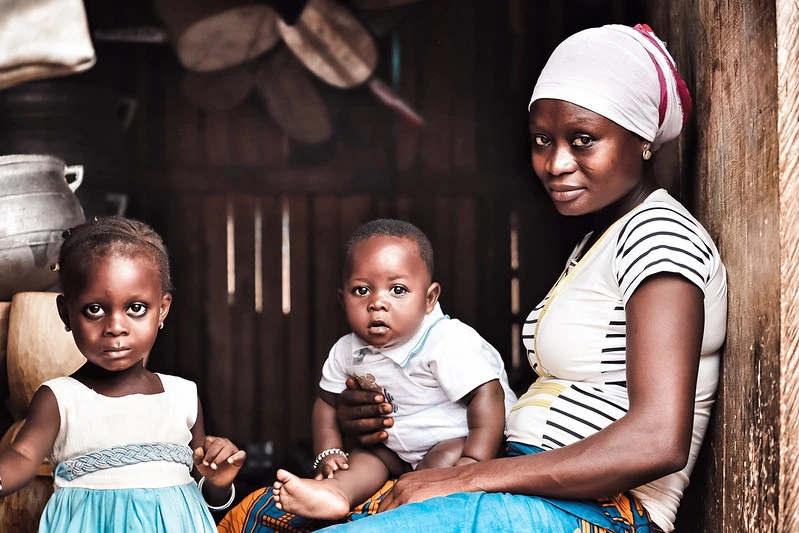
Vf100 Water Filters in Honduras
Honduras is one of the many countries in the world that has been plagued by unsafe drinking water. Due to problems such as pollution, climate

By Julia Hall
We cannot all succeed when half of us are held back.
Malala Yousafzai
Could you, yourself, envision having a wound that would not stop bleeding for 7 days? What if regardless of the fact, you had to use disposable rags to continually clean it? Imagine being an adolescent in schooling, facing this wound every month—and having to discontinue your schooling because of the shame that it brought you and the lack of resources to contain it.
The empowerment of women, and women in the developing world, is crucial in a morphing reality such as ours. Women know that cleanliness and hygiene are a staple for feeling content in daily life. Barriers for women in the area of safe water access, sanitation, and hygiene (WASH) have resulted from a lack of available water-supported infrastructure and resources such as menstrual cycle materials.
Discussion upon these lines will include the unique sanitation needs women in developing countries possess, why these needs matter, the retrieval of water and how proximity to water affects health, and the steps needed in which these are to be systematically improved in infrastructure and education—all on the basis of equity.
Women are genetically bound to reproductive processes. Menstruation and childbearing are just two of the main things which bear greater hygienic needs, especially for women facing limited access to water.
Firstly, on the basis of education: women and girls who go to school and do not have the materials to properly manage menstruation. One article from Lifewater suggested that many schools do not have the proper resources to accommodate menstruation, which can sometimes even lead to the end of their education.
In parts of Africa, India, and Southeast Asia, access to menstrual products, especially disposable ones, is highly limited. Women in the developing world typically use a reusable cloth to absorb menstrual blood but do not always have facilities or proper cleaning products to appropriately clean soiled cloths. (Society of Obstetricians and Gynecologists of Canada, 2021). Even soap and water can prevent the negative and sometimes embarrassing results of menstruation—the same soap and water which many women still do not have.
Childbearing mothers are another group of women who need water-supported infrastructure. In A Systematic Review of Water and Gender Interlinkages: Assessing the Intersection With Health, by Pouramin, Nagabhalta, and Miletto, it was found that new mothers and pregnant women represent a vulnerable population. More specifically, it was revealed that religious new mothers who were fasting were more likely to be underweight as a result of a lack of improved sanitation and clean water.
Both of these characteristics of womanhood—menstruation, and childbearing—are not ones to be ashamed of. Attitudes toward these normal processes are often considered taboo in areas around the world and vary immensely by culture. These practices are still viewed as dirty and impure to many, which makes it harder for women to voice their needs in male-domineered politics surrounding infrastructure.
In developing countries, women and girls are the primary water retrievers. According to UNICEF, women and girls are responsible for water collection in 8 out of 10 households. Numerous studies demonstrated that women’s role as the sole water purveyor exposed them to multiple health risks. “Women have an increased risk of musculoskeletal disorders as a result of carrying water long-term and across long distances…women who fetched water from a drill pipe may also be at increased exposure to toxins,” (Pouramin, Nagabhalta, and Miletto).
Talking about all of the issues women face is only part of the equation. Achievable solutions such as education and proper systems for using the bathroom and hand-washing are what is required for women to feel comfortable in their hygienic practices. Infrastructural intervention is another component of achieving growth for women in these situations.
Installing latrines and toilets, even basic ones, have provided benefits to overall health for women in countries where they are needed. Furthermore, a comprehensive intervention that combined hand-pumps, latrines, and hygiene education demonstrated significant success after a 7-years follow-up, increasing the number of women using improved WASH practices, lowering the number of bacteria on mothers’ hands, and therefore the incidence of diarrhea in their children (Pouramin, Nagabhalta, and Miletto). Another successful observation from this study featured that of water filters and their positive relationship with water quality for these same women.

Access to proper infrastructure which promotes privacy will allow women to take care of their children, spend time with their friends, and not feel as embarrassed or shameful when they leak through their clothing. For now, though, we must continue to ask women their needs and recognize that different solutions fit different households and schools. Check out Business Connect For Water’s Solutions Database, a tool which can sort water filtration and treatment solutions by scale, price, and treatment capability.
Another feature of empowerment is leadership. Giving women the platform they deserve will optimize their voice of concern relating to their needs. With respect to cultural values, women should have the option to take on the role they should want in or out of the household. Gender mainstreaming and education of the resource imbalance due to gender are some of the ways these women can feel their lives elevated to the level they prefer.
There are several ways in which to support women in the developing world and all who require clean water. Educating yourself and others about worldly topics and engaging in helpful media are part of the solution. Empowering the sisters, mothers, and all women in our lives are the interpersonal building blocks of a world we should strive for.
Connecting with us means being part of a community of people who truly care about transforming lives. On the infrastructural level, we can support your cause. If you have access to a region in which to water for women and those in need, see our water filter products here.
If you would like to take your own route to secure water for women and people who need it, you can join our network.
At Business Connect, we are proud to offer several systems for water purification. If you want to learn more about our lineup of specialized technologies, or are generally interested in water crisis solutions, get in touch with us. We’re happy to help with any question, comment, or concern about the state of your water.

Have a story to share in the world of water, sanitation, and hygiene? Connect with our media team today!
Share Your Story

Honduras is one of the many countries in the world that has been plagued by unsafe drinking water. Due to problems such as pollution, climate

Why not give the gift of purified water this holiday season? Whether your loved one likes to travel, wants to have a more sustainable environment,

Market-driven approaches to the water crisis could be one of the most scalable pathways out of poverty for Africans.
We're undergoing some maintenance. Please excuse the mess!